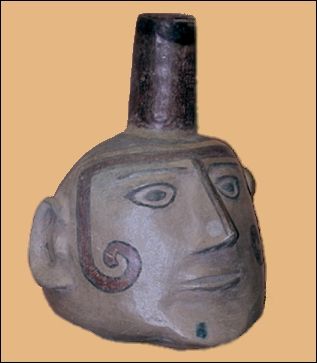
Southwest pottery and over a thousand different types—how is one to begin to identify EI Paso brownware from Hohokam buff pottery? How about color? There are five clay colors that can give you the first clues; brown, buff, red, yellow, and white.
In prehistoric cultures, brown clay was used by the Mogollons here in our region, but today the Navajo make brownware. Buff clays were used in the Hohokam and Paquimé civilizations and it is still popular along the northern and middle Rio Grande, southern Arizona, and northern Chihuahua. Red clay denotes the Salado culture and we find it used in pottery from the Middle Rio Grande pueblos. Early Sinagua/Hopi peoples used yellow clay, and the Hopi continue the tradition. White clay traditions come through the Anasazi to the Acoma and Zuñi pueblos.
Just by looking closely at the color of the clay used in prehistoric or
modern pottery, you'll be surprised at how you can relate them to one another or
tie them to a geographic area. 
Listen to the Audio (mp3 format) as recorded by KTEP, Public Radio for the Southwest.
Contributor: Florence E. Schwein, Centennial Museum, University of Texas at El Paso.
Desert Diary is a joint production of the Centennial Museum and KTEP National Public Radio at the University of Texas at El Paso.

An example of Casas Grandes pottery. Centennial Museum object.
Hayes, A., and J. Blom. 1996. Southwestern pottery: Anasazi to Zuni. Northland Publishing, Flagstaff, 189 pp.
Ancient Cultures of the Southwest. Includes information on clays and techniques.